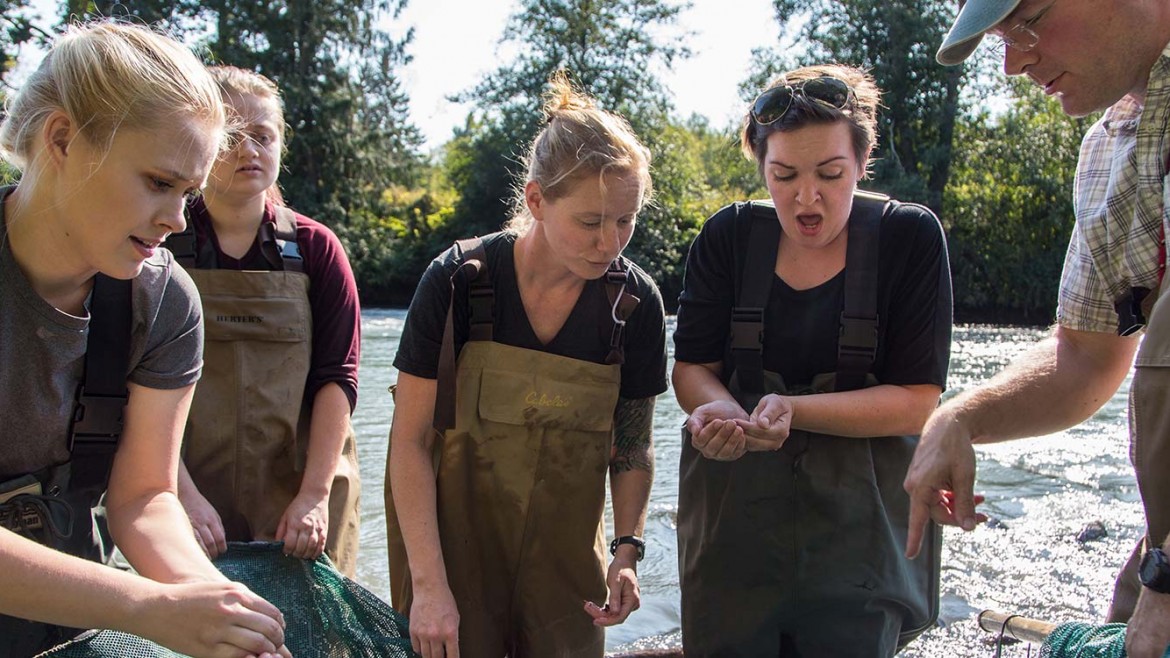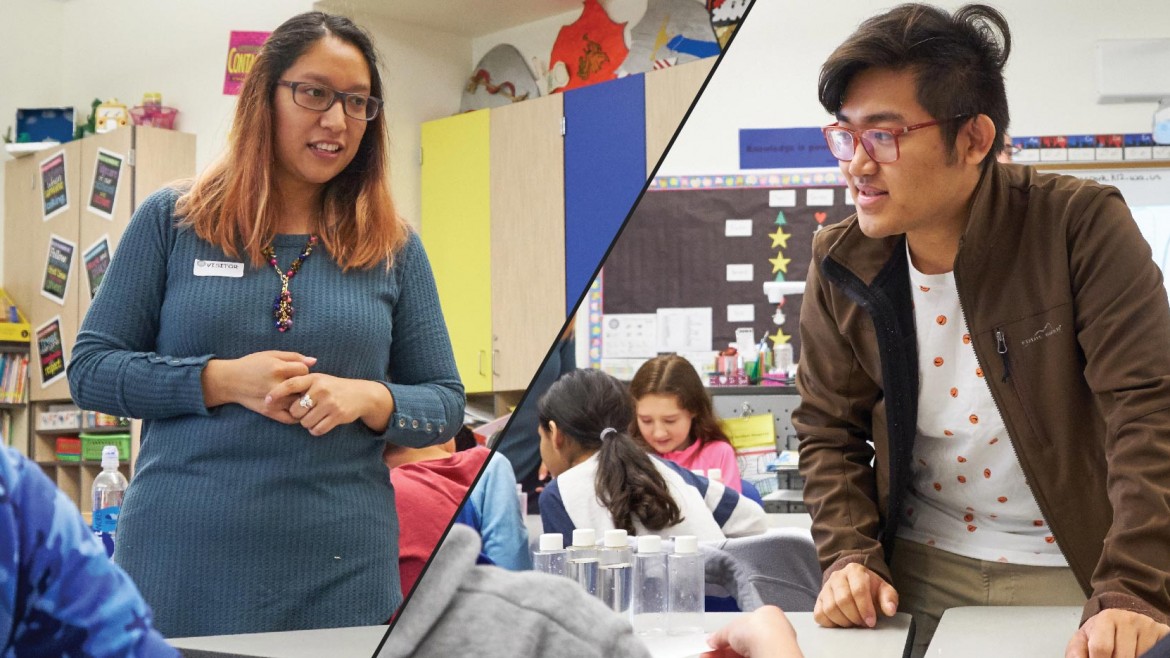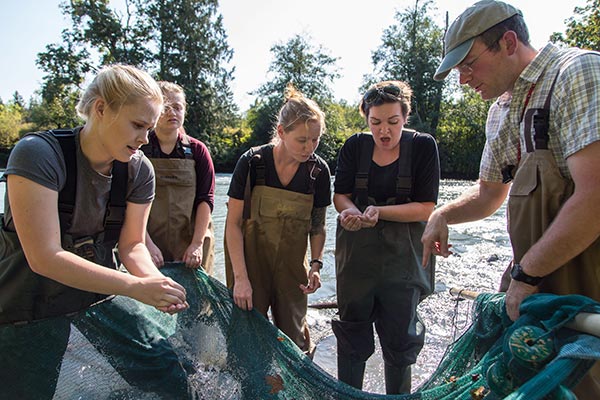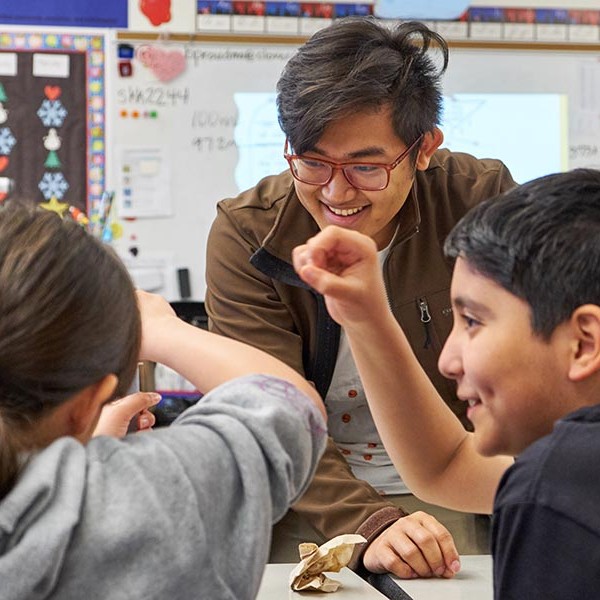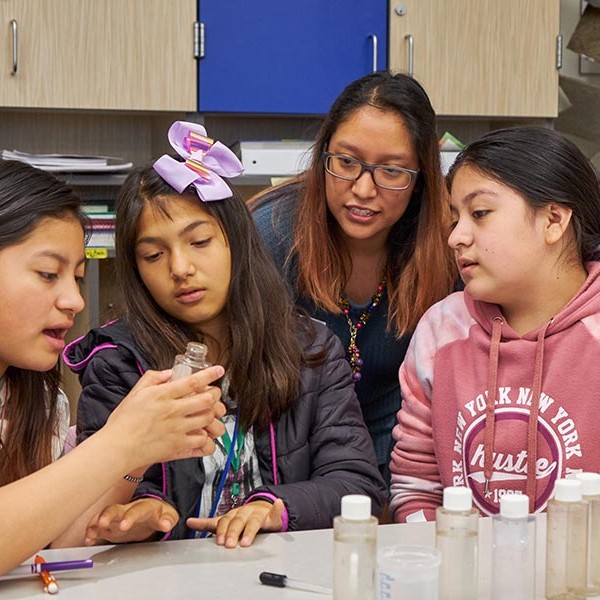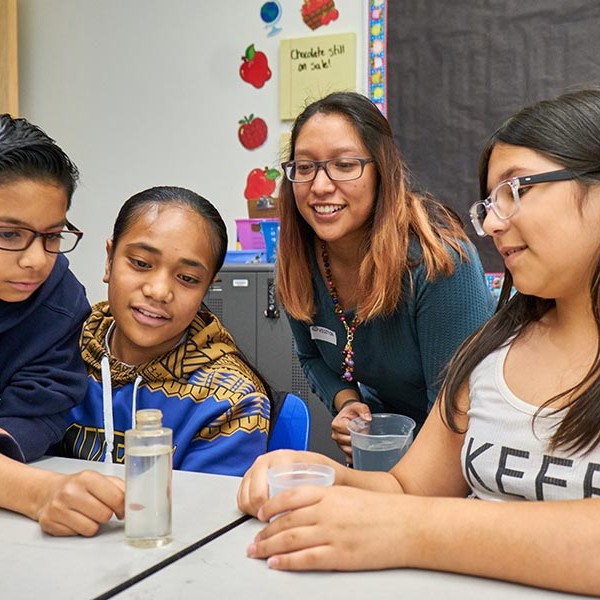Grants Fuel Innovation at PLU

In January, the National Science Foundation awarded the university a $650,000 grant to support academically talented low-income students who come to PLU to study STEM subjects.
Winning the grant was a team effort of PLU’s Division of Natural Sciences faculty, including Tina Saxowsky, principal investigator and associate professor of chemistry, along with Dean of Natural Sciences and biology Professor Ann Auman and faculty members Shannon Seidel, assistant professor of biology, and Amy Siegesmund, associate professor of biology.
“We are very excited about the ability to implement the work outlined in our proposal,” Auman said. “Not only will this funding allow us to provide significant scholarship support for low-income students in STEM, but it will also allow us to better integrate PLU resources and build new structures to support these students’ success.”
The grant, funded by the NSF Scholarships in Science, Technology, Engineering, and Mathematics (S-STEM) program, will be awarded over a five-year period. It will provide scholarships and enhanced support for students who meet the criteria for federal Pell grants, with a particular focus on transfer and commuter students.
Sixty percent of the funds will provide student scholarships. The remaining money will fund new support programs for these students. The goal is to eliminate disparities in graduation and retention rates between low-income students and their peers who study STEM subjects.
Small-group mentoring with trained faculty will connect students with resources and experiences, including study groups, social events and professional development opportunities. The research will measure students’ sense of belonging and the impact of program resources over time.
Not only will this funding allow us to provide significant scholarship support for low-income students in STEM, but it will also allow us to better integrate PLU resources and build new structures to support these students’ success.
Curricular engagement will include a transitions course, linked introductory courses and supplemental instruction. Students will learn resume writing, scientific communication, interviewing and how to apply to undergraduate research programs and graduate schools.
“By collecting data along the way about what strategies work best, this project will help not only those students receiving scholarship support from the grant, but will also help PLU STEM students and those at other institutions in the years to come,” Auman said.
A student-faculty research project analyzing artificial intelligence, smart home technology and their potential effects on energy conservation won a grant funded by Puget Sound Energy and supported by Independent Colleges of Washington.
The project’s faculty advisers, business Assistant Professor Leong Chan and computer science Assistant Professor Renzhi Cao, led a team that includes students from both disciplines. Business students developed the research model and designed consumer survey questions, while computer science students worked to collect data and build a website to increase awareness of energy efficiency through the use of smart home systems.
The goal of the project is to develop an assessment model to evaluate Pacific Northwest residents’ adoption of smart home technology and its impact on energy consumption behaviors. Project participants hope to generate market research that can help utility providers better understand their customers, and assist consumers in choosing the most energy efficient systems for their homes.
Two grants from the Puget Sound Energy Foundation, are making the PLU campus safer. They helped launch a new emergency notification system that includes “Call for Help” devices inside buildings that connect users immediately with Campus Safety and identifies the location of a help station for Campus Safety on a campus map when someone activates it. The devices also serve as loudspeakers that can broadcast emergency messages both inside and outside the buildings.
An outdoor “Call for Help” device and loudspeakers have also been installed on the campus athletic complex – an area heavily used by campus visitors.


